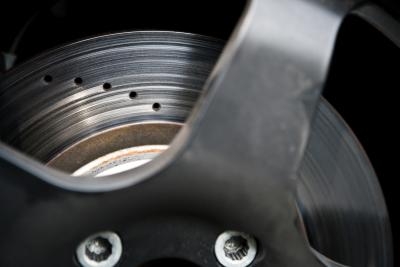
Dodge Rams use power boosters in conjunction with the master cylinder to provide ample stopping power for the trucks. The brake hydraulic system, regardless of the engine size, provides pressure to the front and rear brakes through compressed DOT-3 brake fluid. You bleed the system whenever changing out any portion of the system. Dodge recommends flushing the system when the fluid becomes contaminated or visibly dirty (milky color, thick, or visible debris). Flushing the system takes about an hour to do properly with the right tools.
Remove the cap to the brake reservoir and siphon out any fluid in the brake reservoir and master cylinder using a turkey baster. Fill the reservoir to the fill line with new DOT-3 brake fluid.
Raise the vehicle one wheel at a time with a jack while removing the lug nuts and tires from the wheel using a lug wrench. Place the tires to the side. Place a jack stand beneath the axle of each wheel as you raise the vehicle.
Loosen all four bleed screws. The bleed screw is located on the caliper near the engine for front disc brakes and on the backside of the drum for rear drum brakes. The bleed screw on factory and aftermarket rear-disc brakes is typically located on top of the caliper.
Have an assistant press the brake pedal to the floor and hold. Tighten the four bleed screws and then release the pedal. Repeat the process until clean brake fluid comes out of the bleed screws. Monitor the reservoir to ensure it does not drop beneath half-empty during the process.
Bleed the passenger rear brake first since it is the furthest from the reservoir. Bleed the driver rear second, passenger front third and driver front last. Bleeding the brakes in this order guarantees all air is flushed from the lines.
Place one end of a rubber tube on the bleed screw and the other end inside a clear plastic bottle partially filled with clean DOT-3 brake fluid.
Have the assistant depress the brake pedal fully. Loosen the bleed screw and monitor the fluid coming out. Watch for bubbles. Tighten the bleed screw when the flow of fluid or bubbles stops and release the brake pedal. Repeat until no air bubbles come out for three whole attempts. Fully tighten the bleed screw and refill the brake reservoir.
Repeat Steps 2 and 3 for the other three tires as outlined in Step 1.
Replace each wheel and the lug nuts. Raise the vehicle at each wheel and remove the jack stand before lowering that wheel to the ground. Repeat until all four wheels are on the ground, and tighten the lug nuts to factory specification.